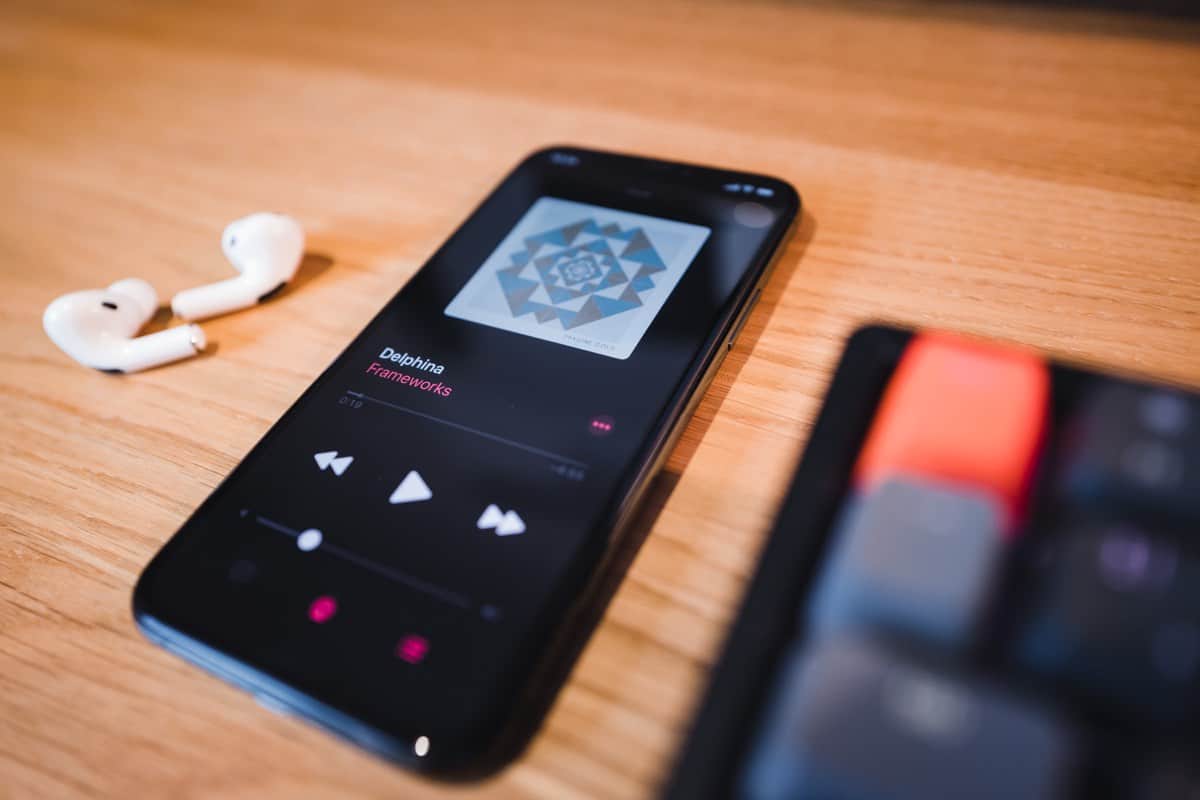As the warmer months are finally upon us, here’s a refresher on my four rules of book buying:
- Don’t be a wimp about it.
- Don’t stress about reading them cover to cover.
- Make notes and mark up the margins.
- Share what you learn.
As the warmer months are finally upon us, here’s a refresher on my four rules of book buying:
“For me, one of the signs of health in emotional margin is how much I’m writing in my notebook each week. If pages begin to stack up without any notes, ideation, or doodling, it’s a sign that I’m not slowing down enough to think on paper.”
Great article by Isaac this week on The Focus Course blog about the draw to return to analog tools.
This is a fantastic Twitter thread from Marie about how she has been using Notion to journal for the past 1,000+ days.
(See also how Chloe has begun using Notion to track her habits.)
This is a great, short video about the value of getting bored and making stuff. (p.s. Give “Herbert’s” phone schedule a try for a few days and let me know what you think.)
Our boys just had spring break and since spring in Kansas City means sunny and 68 degrees one day and rainy and 42 degrees the next, we spent a decent amount of time playing games (we are a gaming family anyway).
Here are some favorites of ours right now.
Root: This is the top game at our house right now (thanks, Mike!). It feels like Settlers of Catan meets Risk. This is definitely more advanced and in-depth — thus my younger two boys (5 and 8) struggle and I have to help them with their turns. My 10yo is great at it. We already have plans to play this tomorrow (Saturday) after breakfast.
Skyjoe: Perfect for casual game night with anyone at just about any age.
Bang: This has been our family favorite for a several years now. There are several expansion packs as well, and about once every six months we will get a new expansion.
Bannanagrams: We will often sneak in a round of Bananagrams before bedtime, or during lunch.
Crew: If you like card games such as hearts, spades, etc. Then you’ll enjoy this.
(Bonus) Dominion: This is a deck-building card game that my family got into back before we all started having kids. We got so many of the expansion decks that I had to build my own custom card box. Anyway… we haven’t played it in ages, but listing out all these other games reminded me how much fun Dominion is. :)
Here’s one from the archives that I recently re-surfaced. As I was reading through this listicle, it’s amazing how smart and timeless a lot of this advice is. I would say that the first two items in the list still stand as true as ever, if not even more so now.
If you need a fun game to play when you’ve already done the Wordle, this is a long-time fave of mine.
A few weeks ago, as our latest Focus Academy cohort was wrapping up, one of the members asked in the Slack group about how to spend time during the “down moments” of his work day when there was roughly 5 or 10 minutes with nothing to do.
Perhaps you’ve experienced just such an awkward window of time like this — such as in-between Zoom meetings or something. And so, allow me to suggest a few ways to spend those few minutes…
Boredom is Good (not bad)
Speaking of ways to spend that awkward downtime, one of the reasons to consider avoiding email and social media is that it can help you to reduce the amount of “novel stimuli” that you let in to your day-to-day life. (This was a main takeaway from my interview with Cal Newport)
When you have a strong baseline level of noise in all the little moments of your life, it makes it more difficult to focus on the task at hand when you’re doing deep work. Because, in short, you’re training your brain that boredom is bad.
Don’t train your brain to think boredom is bad! My 8-year-old is convinced that being bored is the Worst Thing Ever. But boredom is fine! If we “eject” every time we are bored then then it will, in turn, hinder us from being able to focus for extended periods of time.
Consider that not every single book you read has to be fully absorbed.
You can opt to either (a) digest it for later use; or simply allow the book to (b) spark ideas (related and unrelated) to the topic.
In short: feel free to go deep OR to go wide.

Good music is instrumental (ha!) for me to do focused work. Especially when I am working at home with kids in the house.
I almost always have a single, go-to album that I put on when it is time to work. This helps quite a bit as part of my routine for getting into the zone.
It can be difficult to transition from feeling at home to feeling at work. But, by having the same playlist or album that I put on when it is time to work, then that music becomes pavlovian — it tells my brain “now it’s time to work”.
And, over time, as I become used to the music, it turns into background noise that is so familiar it is not distracting at all.
Another reason I like having one specific album that is my go-to for background music is that it removes the decision of what do I want to listen to right now?
The less choices I can make before starting my work day the better. I prefer to save as much of that mental energy as I can for actually doing the work.
Anyway! Enough chit-chat…
Here are a few fantastic albums and playlists for helping drown out the background noise so you can do some work. Enjoy!
The Pure Focus playlist in Apple Music is excellent. It is updated regularly, and I often find new artists there.
The Monument Valley Soundtrack has long been my go-to. I have listened to this album well over 1,000 times. Possibly a few thousand times.
For additional good jams for deep, focused work. Check out this roundup over on The Focus Course blog.
And, of course, for when you are done with work and it’s time to wind down for the day, may I recommend the BEATsrumental playlist? I love to turn this one up while making dinner.
The past few days I have been spending a lot more time than normal reading the news and checking social media. (Pretty sure we all have!)
There is so much happening so fast.
While I don’t personally feel any fear or panicked anxiety about the COVID-19 virus and its implications, I do feel very drawn to social media, the news, and to watch what is happening through these live feeds.
A few things that I am focusing on in light of the current events:
. . . . .
As we all step toward physical isolation, a lot of my social feeds and group text threads have become alive and active in a new way and I am so thankful for the connectedness that we all are able to participate in.
Which is why I feel an an increased focus to create, make, and share more — even though it may feel trite in context to the crisis in our midst.
Yes, it is difficult to focus on just about anything else right now.
But…
I believe creating and doing what you do best has two positive byproducts:
For one, creating and making will help you stay positive.
Moreover, what you create and share will be helpful for all of us who are around you. We need your art, your ideas, and your thoughts now more than ever.
Right now we are feeling just how small the world is and how connected we all are to one another.
That feeling of connectedness is a wonderful thing (even though it is being driven by a global crisis).
So, instead of shying away from creating because it doesn’t seem right, I believe it is all the more necessary that we create and share.
One way I am going to start is simply by trying to share more of my photography and more stories here on my personal website. What about you?
In his fantastic review of the iPhone 11 Pro camera, Austin dropped in this nugget:
We MUST understand our tools in order to successfully move through the creative process. If we don’t know about our cameras’ strengths and weaknesses and why they’re there, it’s really hard to solve problems and achieve our vision.
The more you understand your tools and how they work, then more capable those tools become in your hands as you use them to solve creative problems and do your best work.
Think about this beyond just cameras. Think about the apps you use; the team workflows you all rely on; the physical gear you employ. Do you understand them? Are they helping you solve problems and achieve the vision you have for your work?

Barrett Brooks is the COO of ConvertKit. He writes fantastic articles about leadership on his website, and he’s on the Twitter.
I was in Portland having breakfast with Barrett, and I asked his advice to someone who is interested in improving their creative routine in life. Below is his answer (that yes, totally recorded and transcribed).
Exercise every day.
I’ve been tracking with a lot of folks who are creative people and they’re in the technology space, or in startups, and I hear so much about how anxious they are or that they’re feeling depression. Just mental health challenges.
And I can’t help but wonder how many of these people are exercising every day? How many are moving their body every day?
So I think about removing the things that are making daily withdraws from our creative energy, and doing things to replenish that creative energy instead.
That’s why I encourage people to get into an exercise routine. It doesn’t mean You have to go to the gym and hiring a trainer. It can be as simple as just going to play outside for an hour. But it’s important to do those things that will give space to think and replenish your creative energy.
Because it can be so easy to get into a pattern of check Twitter, do some work, talk on Slack, do this, do that, do that… And there is so much stuff going on that there is no space to be crative.
For example. The other night I was thinking about an article I just published: “Am I enough?”
I knew the title of the article. But I was agitated. Because, though I somewhat knew the direction I wanted to write, I just needed enough space to think about what was it that I want to say in this article and how do I want to say it?
And I think in the end, I really did capture it. But to get over my mental hurdle I had to just stop for a minute. I had to step away from it in order to get the space I needed to think clearly about what it was I wanted to say.
Barrett’s advice reminds me of something I once heard that we often over-emphasize the importance of exercise for our physical health, and under-emphasize the importance of exercise for our mental health.

Over the summer, some friends and I went to Bull Shoals for camping and spearfishing.
After our first day there I noticed that in the early mornings and in the evenings the river would get a huge blanket of fog. So I spent part of my afternoon scouting out some spots that I wanted to shoot from. And then, once the evening fog rolled in, I would be prepared — knowing exactly where I wanted to be and what shots I wanted to get.
Here are a few of those foggy dam shots. I have some other shots of the river bank that I’ll post later.


